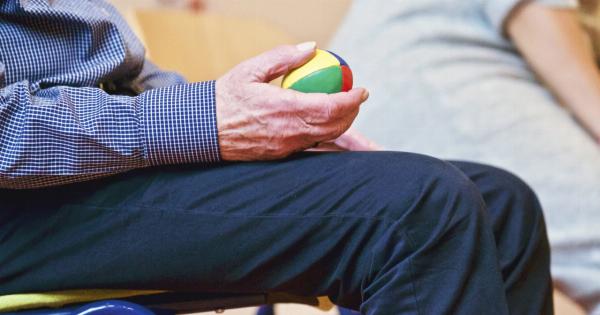Getting a good night’s sleep is essential for overall health and well-being. Sleep disorders can significantly impact a person’s quality of life and have been linked to various health conditions, including stroke.
Stroke is a severe medical condition that occurs when blood flow to the brain is disrupted, leading to brain cell damage and potentially long-term disabilities. It is crucial to understand the relationship between sleep disorders and stroke to identify potential risk factors, preventive measures, and suitable treatment options.
Types of Sleep Disorders
Sleep disorders encompass a range of conditions that affect an individual’s ability to receive sufficient quality and quantity of sleep. Some common types of sleep disorders include:.
1. Insomnia
Insomnia is characterized by difficulty falling asleep or staying asleep, resulting in inadequate rest. It can be caused by various factors, including stress, anxiety, poor sleep habits, or certain medications.
2. Sleep Apnea
Sleep apnea is a disorder in which breathing repeatedly stops and starts during sleep. It can be caused by the relaxation of throat muscles or blocked airways, resulting in loud snoring, choking, and interrupted sleep patterns.
3. Restless Leg Syndrome (RLS)
Restless Leg Syndrome is a neurological disorder characterized by an uncontrollable urge to move the legs, usually due to uncomfortable sensations. RLS can disrupt sleep, leading to excessive fatigue and daytime sleepiness.
4. Narcolepsy
Narcolepsy is a neurological disorder that affects the brain’s ability to regulate sleep-wake cycles. It can cause excessive daytime sleepiness, sudden episodes of sleep, and sleep paralysis.
The Link Between Sleep Disorders and Stroke
Research suggests a strong association between sleep disorders and an increased risk of stroke. Sleep disorders can contribute to the development of various risk factors for stroke, including:.
1. High Blood Pressure
Several sleep disorders, such as sleep apnea and insomnia, have been linked to increased blood pressure. Chronic high blood pressure is a significant risk factor for stroke, as it puts strain on blood vessels and promotes the formation of blood clots.
2. Atrial Fibrillation
Sleep apnea is also associated with an increased risk of developing atrial fibrillation, a condition characterized by irregular heartbeats.
Atrial fibrillation can lead to the formation of blood clots, which can subsequently cause a stroke if they travel to the brain.
3. Diabetes
Some sleep disorders, particularly sleep apnea, have been linked to an increased risk of developing type 2 diabetes. Diabetes is a significant risk factor for stroke due to its impact on blood vessels and overall cardiovascular health.
4. Obesity
Several sleep disorders are more prevalent in individuals who are overweight or obese. Obesity is a known risk factor for stroke, as it can lead to the development of other risk factors, including high blood pressure, diabetes, and atherosclerosis.
Preventing Stroke in Individuals with Sleep Disorders
Prevention plays a crucial role in reducing the risk of stroke in individuals with sleep disorders. Here are some measures that can help:.
1. Seek Treatment for Sleep Disorders
If you suspect you have a sleep disorder, it is essential to seek medical evaluation and diagnosis.
Treating sleep disorders, such as sleep apnea or insomnia, can help lower the risk of stroke by addressing associated risk factors like high blood pressure.
2. Maintain a Healthy Lifestyle
Eating a balanced diet, engaging in regular physical activity, and maintaining a healthy weight can significantly reduce the risk of stroke. Healthy lifestyle choices can also improve sleep quality and help manage underlying sleep disorders.
3. Manage Stress and Anxiety
Stress and anxiety can contribute to inadequate sleep and increase the risk of stroke.
Finding healthy ways to manage stress, such as practicing relaxation techniques, seeking therapy, or engaging in enjoyable activities, can benefit both sleep and stroke prevention.
4. Follow Medical Recommendations
If you have an existing medical condition, such as hypertension or diabetes, it is crucial to follow your healthcare provider’s recommendations for management. Controlling these conditions effectively can reduce the risk of stroke.
Treatment Options for Sleep Disorders
Several treatment options are available for sleep disorders. The appropriate treatment depends on the specific disorder diagnosed. Some common treatment options include:.
1. Continuous Positive Airway Pressure (CPAP)
CPAP is commonly used to treat sleep apnea. It involves wearing a mask over the nose or mouth during sleep, which delivers a constant flow of air to keep airways open and prevent sleep disturbances.
2. Medications
Medications may be prescribed to manage certain sleep disorders, such as insomnia, restless leg syndrome, or narcolepsy. It is essential to follow the prescribed dosage and discuss any potential side effects with a healthcare professional.
3. Cognitive Behavioral Therapy for Insomnia (CBT-I)
CBT-I is a structured therapy that helps individuals identify and modify negative thoughts and behaviors contributing to insomnia. It focuses on improving sleep hygiene, relaxation techniques, and establishing healthy sleep habits.
4. Lifestyle Modifications
In some cases, lifestyle modifications alone can significantly improve sleep disorders.
This may involve establishing a regular sleep schedule, creating a relaxing bedtime routine, avoiding stimulants like caffeine before bed, and creating a comfortable sleep environment.





























